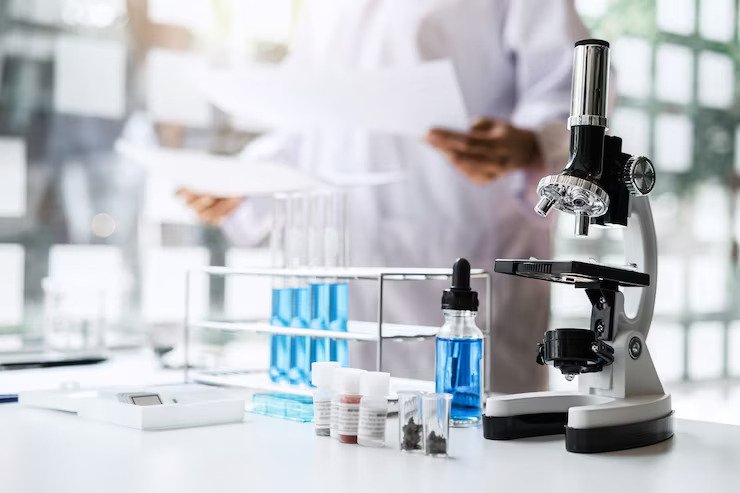7 Ways To Maintain Lab Equipment 2023
Maintaining lab equipment is crucial to ensure the accuracy and consistency of experimental results.
Regular maintenance of lab equipment helps prevent malfunctions, reduces downtime, and increases the lifespan of the equipment.
Checkout Seven Important Steps To Maintain Lab Equipment 2023
Here are seven ways to maintain lab equipment in 2023.
1. Develop a Maintenance Schedule

Developing a maintenance schedule is the first step in maintaining lab equipment. The frequency of maintenance depends on the type of equipment and how often it is used. For example, a microscope used daily may require more frequent maintenance than a balance used once a week.
The maintenance schedule should also include the type of maintenance required, such as lubrication, replacement of filters or bulbs, and calibration. It is essential to follow the manufacturer’s instructions when performing maintenance to ensure the equipment functions correctly and safely.
2. Clean Equipment Regularly
Keeping lab equipment clean is critical to its longevity and accuracy. Dust and debris can accumulate on equipment, affecting its performance and accuracy. Cleaning should be performed regularly, following the manufacturer’s instructions.
Some equipment requires special cleaning solutions, while others can be wiped down with a damp cloth. Always ensure that the equipment is completely dry before using it again. Regular cleaning also reduces the risk of contamination and cross-contamination between samples.
3. Calibrate Equipment
Calibration is the process of adjusting laboratory equipment to ensure it provides accurate results. The frequency of calibration depends on the type of equipment, how often it is used, and the level of accuracy required. Some equipment may require daily calibration, while others only need calibration once a year.
Calibration should be performed using traceable standards to ensure accuracy. A calibration certificate should be issued after each calibration, stating the date, the results, and any adjustments made. This certificate provides evidence of the equipment’s accuracy and compliance with regulatory requirements.
4. Replace Worn or Damaged Parts

Worn or damaged parts can affect the accuracy and performance of lab equipment. It is important to inspect equipment regularly and replace any worn or damaged parts promptly. Replacement parts should be obtained from the manufacturer or an authorized supplier to ensure they are of the correct specification and quality.
Replacing parts should be performed following the manufacturer’s instructions to ensure safe and correct installation. Worn or damaged parts should be disposed of correctly, following any regulatory requirements.
5. Train Staff on Equipment Maintenance
Properly trained staff can help maintain lab equipment and reduce downtime. Staff should be trained on the proper use and maintenance of equipment, including cleaning, calibration, and replacement of parts. They should also be trained on how to detect and report any malfunctions or abnormalities in equipment performance.
Training should be provided by qualified personnel or the equipment manufacturer. It is also essential to provide ongoing training to ensure staff is up-to-date with the latest maintenance techniques and procedures.
Related: 5 Factors To Consider When Buying Lab Equipment
6. Store Equipment Properly
Proper storage of lab equipment is essential to ensure its longevity and accuracy. Equipment should be stored in a clean and dry area, away from direct sunlight, heat, or moisture. Equipment that is not in use should be stored correctly, following the manufacturer’s instructions.
Some equipment may require special storage conditions, such as refrigeration or humidity control. It is essential to follow the manufacturer’s instructions for storing equipment to prevent damage and ensure accuracy.
7. Keep Records of Maintenance

Keeping records of maintenance is essential to ensure the accuracy and compliance of lab equipment. Records should include the date of maintenance, the type of maintenance performed, the results, and any issues found. These records should be stored in a secure location and readily accessible for regulatory or compliance purposes.
Maintenance records can also be used to identify trends or patterns in equipment performance, allowing for preventative maintenance and reducing downtime. Regular maintenance of lab equipment is critical to ensure its accuracy and longevity
In conclusion, maintaining lab equipment is essential to ensure accurate and reliable experimental results, as well as to extend the lifespan of the equipment.
The seven ways discussed in this article provide a useful framework for laboratory technicians and researchers to develop an effective maintenance plan for their equipment. Finally, it is important to keep accurate records of maintenance and repairs, as well as any incidents or issues that arise.
Read Also:
- 5 Financial Strategies For Medical Practices
- Top Advancements In Healthcare Domain That Improve Overall Efficiency
- Highlighting The Key Benefits Of Practice Management Software For Psychologists



